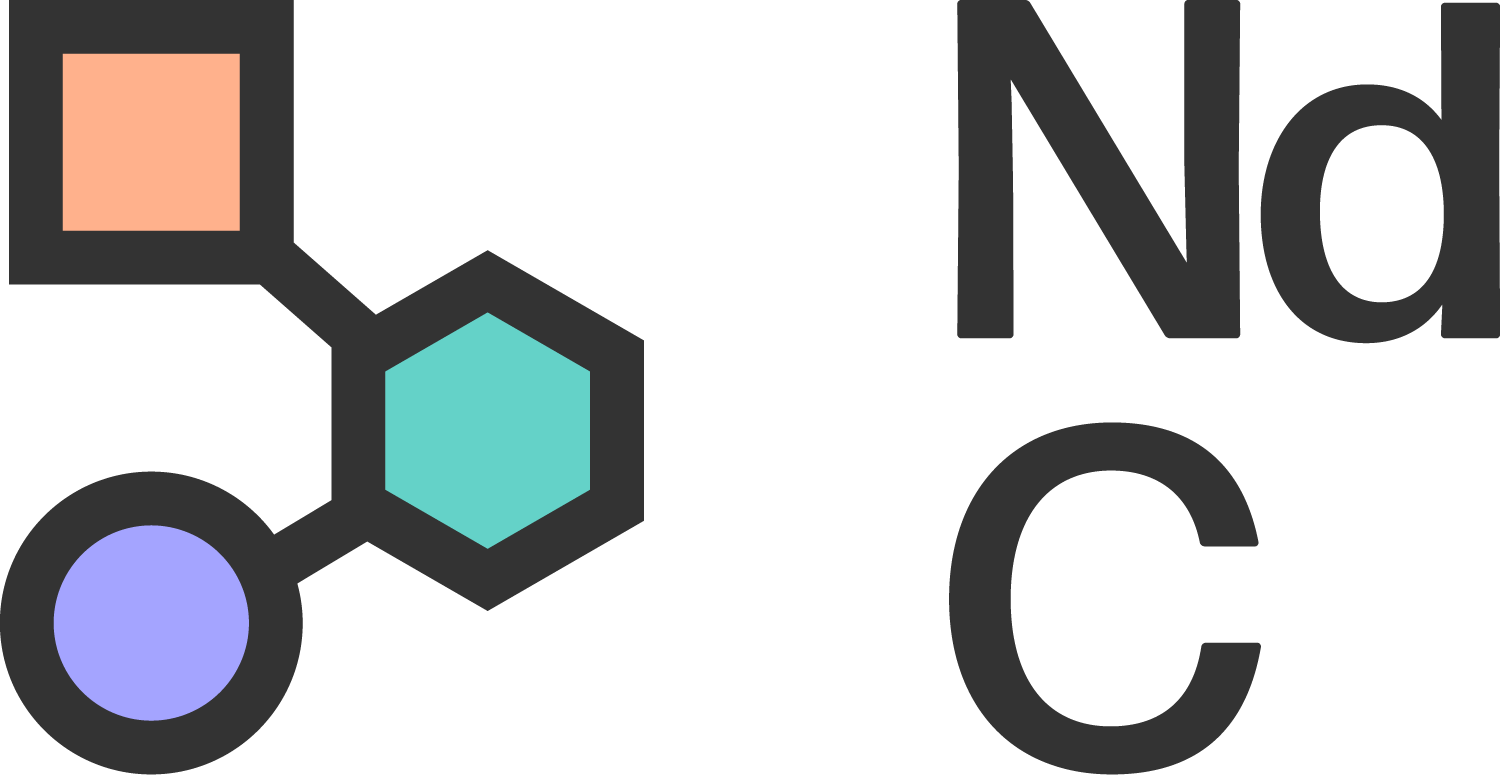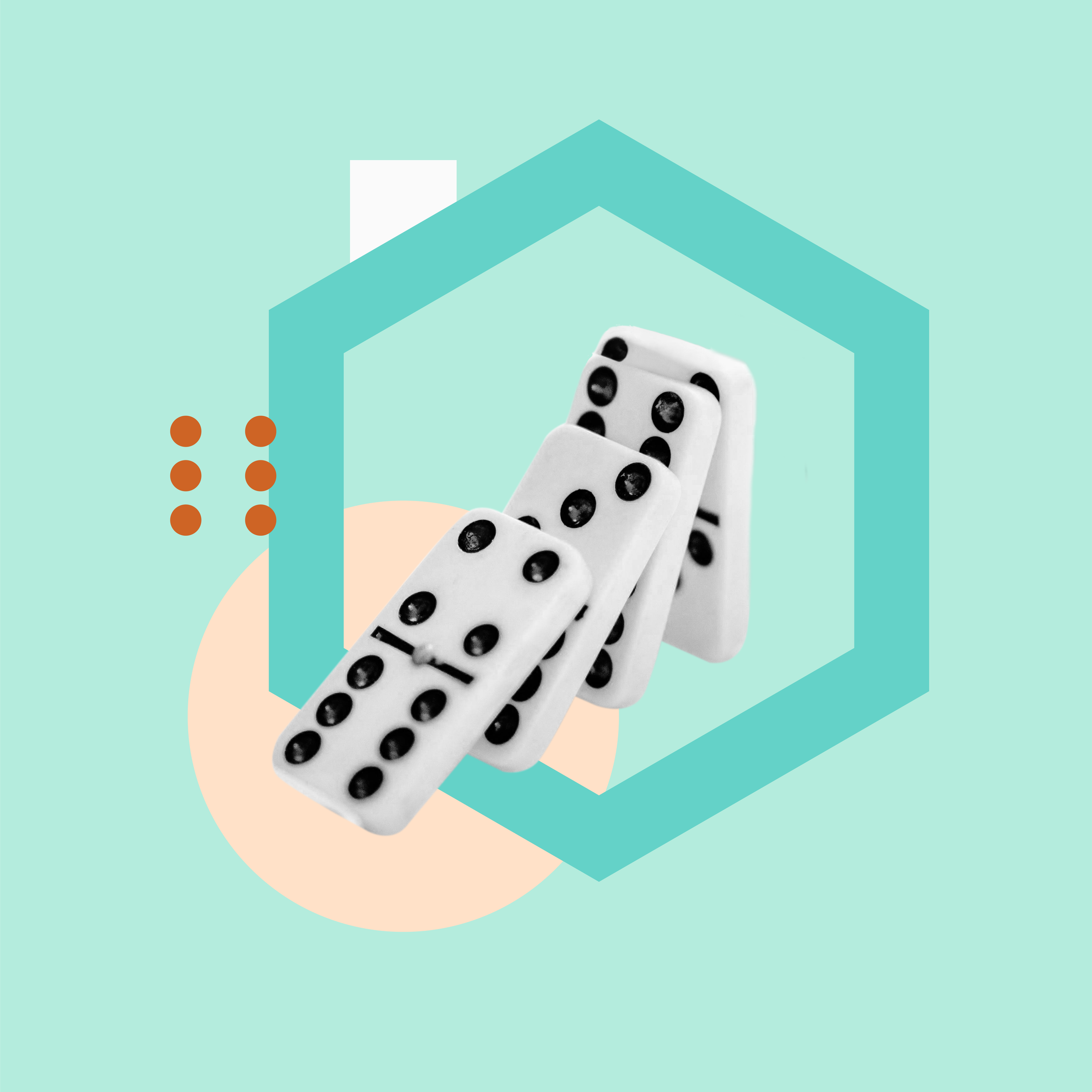Introduction
What is Neurodivergent-affirming language?
Neurodivergent-affirming language comes from the neurodiversity paradigm and movement (Hartman, O'Donnell-Killen, Doyle, Kavanagh, Day & Azevedo, 2023). Whilst Judy Singer (Singer, 1998) is noted as the first person to use the term neurodiversity in her thesis, the terminology and paradigm was a collaborative effort developed in chatrooms and forums of the early 1990s and since (Walker, 2021). Building on the social model of disability, the Neurodivergent paradigm embraces Neurodivergence and encourages not only acceptance but Neurodivergent expression and existence as minority groups (Walker, 2021). Neurodivergent-affirming language is a direct result of the Neurodivergent movement and focuses on using language that encourages, accepts and acknowledges the Neurodivergent existence.
Why use it?
Neurodivergent people face numerous oppressions, which multiply with other intersectional marginalisations (such as being queer see McAuliffe, Walsh & Cage, 2023). As such by using Neurodivergent-affirming language you support Neurodivergent communities to gain recognition and rights whether you are part of those communities or not.
Terminology
There are a number of words connected directly to the neurodiversity paradigm. Before exploring some core terms, it is crucial to note that neurodiversity and Neurodivergence are not shorthand for Autistic or Autism. There is a wealth of ways to be Neurodivergent from Autism and ADHD through to acquired brain disorders to LSD related brain alterations (Walker, 2021). As such when using Neurodiversity-affirming language be aware of times when using direct terms such as Autism, ADHD, dyslexia etc. may be more appropriate.
The rest of this section is dedicated to discussing some core terms within the neurodiversity paradigm. The definitions have been supported by the works of Nick Walker (Walker, 2021), Judy Singer (Singer, 1998), CAPTAP (Community Against Prejudice Towards Autistic People) (CAPTAP, 2023) and “The Adult Autism Assessment Handbook: A Neurodiversity Affirmative Approach” (Hartman, O'Donnell-Killen, Doyle, Kavanagh, Day & Azevedo, 2023).
-
Example Use:
The human existence is enriched by neurodiversity.
The concept that everyone is on a neurodiversity spectrum of infinite neurocognitive functioning. Neurodiversity refers to everyone and cannot be used to refer to a single person. It cannot be used to describe a sub-group within the neurodiversity spectrum.
-
Example Use:
Autism is a Neurodivergence, an Autistic person is Neurodivergent.
Neurodivergence describes the existence or mind-body experience being Neurodivergent. It is a broad term and encompasses the state of being of anyone who’s neurocognitive function differs from societal standards of neurotypical.
-
Example Use:
I have ADHD, I am neurodivergent.
Is a person who diverges from the neurotype that benefits from and works with the way the society they live in operates. A person with multiple different neurocognitive Neurodivergences can be called ‘multiply Neurodivergent’.
-
Example use
Within this study there were multiple neurotypes.
A neurotype refers to type of neurocognitive make up of a person. Neurotypical and Neurodivergent are neurotypes.
-
Example use: My friend is Autistic and has ADHD, I do not have Autism or ADHD, I am neurotypical.
Is a person who’s neurotype benefits from and works with the way the society they live in operates.
-
Example Use:
I embrace my Autism and my stimming and am promoting stimming acceptance in my workplace – I am NeuroQueering my workplace.
A term coined by Nick Walker (2021), to embrace ones Neurodivergence in a way that queers the neuro-normative, cisgendered, heteronormative patriarchal society.
Preferred terms
There are multiple terms that are widely used both in historical texts and in works being published today, that do not align with the wishes of both the Neurodivergent and more specifically the Autistic community. Below is a guide to some of the language that you may come across when working within the Autistic and Neurodivergent communities.
-
Use:
Autism
Example Use:
My presentation examines Autism and co-occurring physical illnesses.
In 2016 (Kenny, Hattersley, Molins, Buckley, Povey & Pellicano, 2016) research showed that whilst there was a preference for Autism, the approval of Autism Spectrum Disorder (ASD) or Autism Spectrum Condition (ASC) was mixed. Six years later in 2022 (Bonnello, 2022) a study of 11 212 people (of which 7 491 were Autistic) found that only 7.73% of Autistic people would use ASC to describe their own experience. Whilst many articles and websites do still use ASD and ASC community consensus strongly prefers the singular term Autism.
-
Use:
Autistic
Example usage:
I am running a training on sensory issues for Autistic Women.
The movement in the Autistic community to use Autistic rather than with Autism is over 30 years old. Jim Sinclair wrote “Don’t Mourn for Us” (Sinclair, 2012) outlining the fact that you cannot remove Autism from an Autistic person and that being Autistic was intrinsic to his sense of self. 1999 he (Sinclair, 2013) wrote – “Why I dislike “Person First” language”. In it he outlines how by trying to remove the Autism from the person not only is the Autism framed as a negative construct to be deleted but the concept of person first language acts to dehumanise the Autistic person. Over two decades after “Don’t Mourn for Us” was published, Kenny, Hattersley, Molins, Buckley, Povey and Pellicano (2016) conducted their research detailing that whilst professionals preferred to use people with Autism, the Autistic people surveyed preferred Autistic. Lastly in 2022 (Bonnello, 2022), of 7 491 Autistic people surveyed, 91.14% of Autistic people surveyed said that they preferred the term Autistic person. This result showed an increased percentage from the 2018 survey. This shift from People with Autism is not a sudden or recent change, but a consistent, and often ignored, request from the Autistic community since the early 1990s.
-
Use:
Specific descriptions
Example Use:
I had a meltdown due to sensory overload at the conference.
When describing distress, it is vital to describe the specifics. The shift from challenging behaviour, as with much of the language in this guide, has been happening for decades. An example being Chan, Arnold, Webber, Riches, Parmenter and Stancliffe (2012) who discuss the pathologising of behaviour and the incorrect belief that it is an inherent choice on behalf of the person under destress. In 2023 (Jorgensen, Nankervis & Chan, 2023) an article was released again stressing the need to move from the concept of the behavioural loci being situated within the person and move for a focus on environmental and social issues influencing behaviour. Challenging behaviour is a term built on locating the presentation of distress as an inherent issue with the person (and particularly the person’s mind-body relation) that should be medicalised and treated within the person – regardless of what is causing that person to be distressed (for example: pain, sensory overload, anxiety). Describing the specifics of what is happening enables the presentation of distress to be localised to specific socio-environmental time events that are not inherent.
-
Use:
Disability/Disabled Person
Example Use:
I work as a disability researcher, and I am currently studying the needs of Disabled workers.
Community dislike for euphemistic language surrounding disability echoes that of person first language within the Autism community. In 1985 Longmore (Longmore, 1985) discussed the scorn with which terms like ‘handicapable’ and ‘differently able’ were met within in the disabled community. More recently in 2019 Andrews, Forber-Pratt, Mona, Lund, Pilarski and Balter (2019) explored the community movement #SayTheWord which promoted the use of the term disability and disabled. Andrews, Forber-Pratt, Mona, Lund, Pilarski and Balter (2019) stress that this movement is not just a case of personal preference and that in, misguided, attempts to remove the concept of disability from a person there risks the defunding of services, removal of reasonable adjustments and destruction of disabled communities. As such language that acknowledges disability in its entirety is vital.
-
Use:
Variable support needs
Example Use:
I find after work I am tired and need help with cooking dinner—my support needs are higher when I get home.
The use of high or low functioning is often used as a method to underrate the support needs of Autistic people without intellectual disability. In their 2020 study Alvares et al. (Alvares et al. 2020) examined the intelligence quotient, adaptive behaviour and age at diagnosis in 1041 Autistic people with an intellectual disability and 1184 without an intellectual disability. They found the behaviour scales of children without intellectual disabilities were statistically significantly lower than their intelligence quotients. Alvares et al.’s (2020) research shows the need to remove high and low functioning and replace them with the more appropriate and accurate variable.
-
Use:
Neurotypical or Neurodivergent
Example usage:
We had two groups of children. A neurotypically developing group and a Neurodivergent group – consisting of children with ADHD.
The concept of normal is rooted in the medical model of disability (Brisenden, 1986). In the late 1980s Mike Oliver developed the social model of disability (Oliver, 1986; Oliver, 2013) which outlines that society is disabling and that rather than an abnormality to be cured disabled people should be supported to live full and independent lives. When developing the Neurodivergent paradigm Walker (2021) builds off the base of Oliver’s social model of disability. As such within the paradigm there is no concept of normal/abnormal, there is simply a spectrum of human existence.
-
Use: Stimming
Example use:
We encourage people to use their stim toys and stim during this event.
When using Neurodivergent affirming language use stimming. Stereotypy comes from a behavioural root based on the works of B.F. Skinner (for example see Skinner, 1965). When used in the context of Neurodivergence, stereotypy is a behaviour that is often viewed as a negative to be regulated and corrected. Within the Neurodivergent Paradigm these stimming behaviours are seen as necessary self-regulation that is to be supported and encouraged. Through movement and sound the neurodivergent person is able to have a greater connection with their mind-body and in doing so have a greater connection to the world around them.
-
Use:
Traits or characteristics
Example Use:
Executive dysfunction is an Autistic trait.
Similarly, to the use of Autism rather that “with Autism”, traits or characteristics should be used rather than symptoms. Again, this is rooted in the medical model of disability, symptoms denote a problem that requires fixing. Traits acknowledge the neurodivergence of Autism without coding it as a value judgement. In addition, the Autistic community has stated a preference for traits or characteristics (this can be seen in the work of CAPTAP, 2023).
Conclusion
Language may change over time, but it is vital that as it does that the community it is used for is the driving force behind the change. Though using community endorsed language steps are taken to break down ableism, stigma, and barriers. If you are not sure what language a specific person wishes to use ask them, however when speaking about the community as a whole use the language described above.
If you would like to share your comment or suggest additions to this language guide, we would love to hear from you. Please get in touch by using this form.
-
Alvares, G. A., Bebbington, K., Cleary, D., Evans, K., Glasson, E. J., Maybery, M. T., Pillar, S., Uljarević, M., Varcin, K., Wray, J., & Whitehouse, A. J. (2020). The misnomer of ‘high functioning autism’: Intelligence is an imprecise predictor of functional abilities at diagnosis. Autism, 24(1), 221-232. https://doi.org/10.1177/1362361319852831
Andrews, E. E., Forber-Pratt, A. J., Mona, L. R., Lund, E. M., Pilarski, C. R., & Balter, R. (2019). # SaytheWord: A disability culture commentary on the erasure of “disability”. Rehabilitation psychology, 64(2), 111.
CAPTAP (2023). How to Talk About Autistic Ways of Being.
Bonnello, C. (2022). Results and Analysis of the Autistic Not Weird 2022 Autism Survey. Autistic Not Weird.
Brisenden, S. (1986). Independent living and the medical model of disability. Disability, Handicap & Society, 1(2), 173-178.
Chan, J., Arnold, S., Webber, L., Riches, V., Parmenter, T., & Stancliffe, R. (2012). Is it time to drop the term ‘challenging behaviour’?. Learning Disability Practice, 15(5).
Hartman, D., O'Donnell-Killen, T., Doyle, J. K., Kavanagh, M., Day, A., & Azevedo, J. (2023). The Adult Autism Assessment Handbook: A Neurodiversity Affirmative Approach. Jessica Kingsley Publishers.
Jorgensen, M., Nankervis, K., & Chan, J. (2023). ‘Environments of concern’: reframing challenging behaviour within a human rights approach. International Journal of Developmental Disabilities, 69(1), 95-100.
Kenny, L., Hattersley, C., Molins, B., Buckley, C., Povey, C., & Pellicano, E. (2016). Which terms should be used to describe autism? Perspectives from the UK autism community. Autism, 20(4), 442-462.
Longmore, P. K. (1985). A Note on Language and the Social Identity of Disabled People. American Behavioral Scientist, 28(3), 419-423. https://doi.org/10.1177/000276485028003009
McAuliffe, C., Walsh, R. J., & Cage, E. (2023). “My whole life has been a process of finding labels that fit”: A Thematic Analysis of Autistic LGBTQIA+ Identity and Inclusion in the LGBTQIA+ Community. Autism in Adulthood, 5(2), 127-138.
Oliver, M. (1986). Social policy and disability: Some theoretical issues. Disability, Handicap & Society, 1(1), 5-17.
Oliver, M. (2013). The social model of disability: Thirty years on. Disability & society, 28(7), 1024-1026.
Sinclair, J. (2012). Don't Mourn for Us. Autonomy, the Critical Journal of Interdisciplinary Autism Studies, 1(1).
Sinclair, J. (2013). Why I dislike “person first” language. Autonomy, the Critical Journal of Interdisciplinary Autism Studies, 1(2).
Singer, J. (1998). The Birth of Community Amongst People on the Autism Spectrum: A personal exploration of a New Social Movement based on Neurological Diversity
Skinner, B. F. (1965). Science and human behavior (No. 92904). Simon and Schuster.
Walker, N. (2021). Neuroqueer Heresies: Notes on the neurodiversity paradigm, Autistic empowerment, and postnormal possibilities. Autonomous Press.






